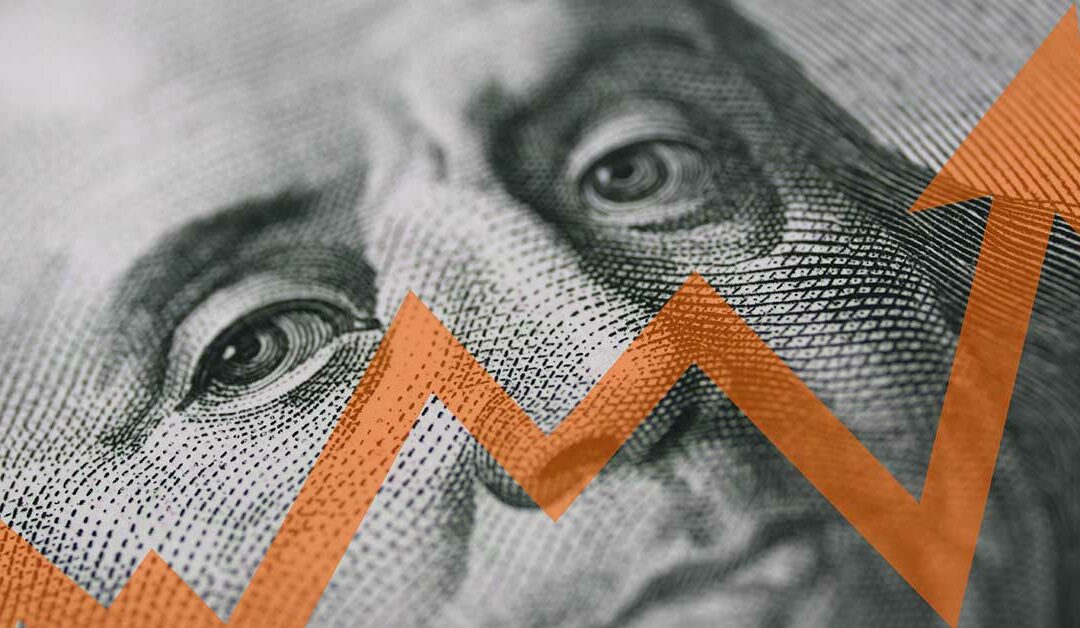Everyone has been talking about inflation, but do we really understand how it affects the average American? In the most basic terms, inflation is when our money has less “purchasing power”, or when the same amount of money is now not enough to buy what it used to.
With the Ukrainian-Russian War and lingering Covid-19 effects, many factors have hit the U.S. at once. Besides the direct impact of the pandemic, the economy is adjusting to life outside of strict national quarantines and lockdowns that were necessary to mitigate the loss of lives.
Households have been adding to their savings over the past two years, and with this surplus of cash we are now seeing a large increase in demand for goods. On the flipside, supply of goods has decreased from the shutdown of factories and the global supply chain issues. With these two forces working together, companies have increased the prices of their goods. The service industry also suffered heavily during Covid, and people are eager to spend money on experiences again. This means rent, tickets, even a restaurant bill are more expensive.
With these inflationary pressures, spending money has taken on a new level of awareness for all ages – many of those too young to have experienced the Global Financial Crisis of 2007-2008 are feeling the impact perhaps for the first time.
The Federal Reserve (“the Fed”) has two mandates: to achieve “full employment” and “low inflation” (an inflation target of near 2%.) With inflation running at 9%+, the Fed has been raising interest rates aggressively in an effort to quell the impact.
In addition to groceries and restaurant bills, what other spheres of life are impacted by inflation?
Mortgages and loans
All kinds of debt are affected by the increase in the borrowing rate. This includes student debt, credit card debt, and any other type of loan or borrowing. The average rate for a standard 30-year mortgage today is 6.24%.
The economy works as a pendulum, and eventually extreme swings to one side affect factors in such a way that leads to an extreme swing to the other. One positive effect is that more expensive mortgages mean less demand for housing, ultimately causing house prices to decrease. The home price growth rate has been in the double-digits in recent years, and if this growth rate slows and house costs decrease, the effect could certainly slow inflation or even bring it down.
Job market
After the pandemic lockdowns and quarantines loosened, the labor market boomed. Employees were able to “shop around” among employers for the best benefits and pay. However, the decline in economic activity and higher rates could mean that competitive benefits are not sustainable for much longer.
Some large technology companies have experienced losses related to the high risk associated with tech-investment have needed to cut back on costs associated with hiring and keeping on employees.
Amazon and Alphabet, two huge companies affected by the decline in technology-investment, have made statements concerning slowing down in their hiring.
The labor market has not slowed entirely – there are still almost twice as many job openings as there are people looking for jobs. That’s an example of how just how uncertain times are. Should a company hire and invest in employees, or should they push the pause button?
Investment value
Just like purchasing power, money held in the stock market has decreased in value. We look at market indexes such as the S&P 500 and Nasdaq 100 to get an understanding of market as a whole. Since the beginning of this year, the indices are down 15.9% % and 23.2% this year respectively.
What this means for you is that the value of your investments has decreased. 401ks, stocks, bonds, pensions all of their values are less than they were at the beginning of the year. Investors of all shapes and sizes from individuals to investment banks are evaluating risk – everything feels risky.
The dollar’s dynamic internationally
Investors are encouraged to increase their investments in the U.S. given the stronger U.S. dollar. This is a benefit to the American traveler who wants to visit a country whose currency value has decreased relative to the dollar. While this is a benefit for us, this effect reverses for other countries – and companies that have international operations and need to repatriate their profits from a foreign currency to the U.S. dollar.
Inflation is not just a concern in the United States – Canada, Australia, and Switzerland are experiencing the same pressures. Economies whose currency is tied to the dollar, such as Saudi Arabia, are feeling a more direct effect.
In conclusion, the inflation impact is real – and the impact is cutting across families, countries and companies. We believe the Fed will continue to raise rates over the coming months in an effort to reduce inflation closer to it’s 2% target.
If you need assistance thinking through strategies that may actually benefit from inflation, reach out. We are here to help.
Writing contributions by Alina Dovganetskiy + Roberta Keller

